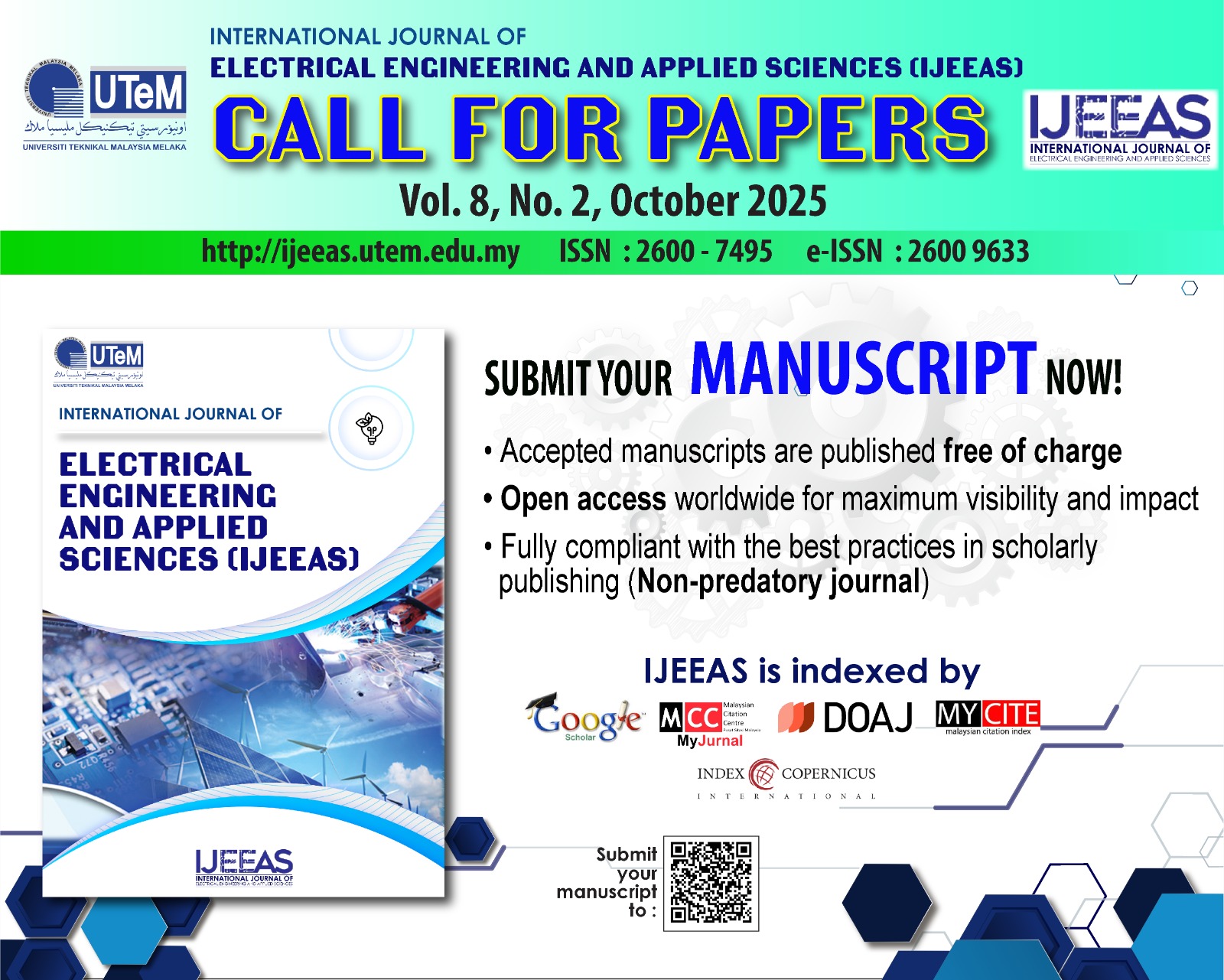Conceptual Design of Co-Axial Floating Multiple-Rotors Water Current Turbine (FMRCT)
Keywords:
co-axial multiple rotors, distance between rotor, renewable energy, water current turbineAbstract
Depletion of fossil fuel as well as increasing in price had pressured the world energy to give focus on renewable energy. This paper interest is to describe the conceptual design of a floating multiple-rotor water current turbine (FMRCT) as well as to investigate the effect of distance between two rotors over diameter ratio (S/D) towards power output increment. Further, the contribution of each rotor toward the FMRCT power output increment also will be discussed. With the interest to increase output power, FMRCT concept design is where few rotors were arranged in series with a suitable distance between each rotor, fitted with a floater at one end, and connected to a generator at the other end. The FMRCT model was tested in an open stream at Lata Ulu Licin (Lecin). Results show that increment of the output voltage is very significant as S/D increased up to S/D = 1.48. Furthermore, extra rotor on FMRCT also proportionately increase the power output, ranging almost similarly from 6.28% to 8.91% of power.Downloads
References
References [1] Z. Zhou, M. Benbouzid, J.F. Charpentier, F. Scuiller, and T. Tang, Developments in Large Marine Current Turbine Technologies – A review, Renewable and Sustainable Energy Reviews, Vol. 71, pp. 852 – 858, 2017.
S.A. Kale, and S.N. Sapali, Innovative Multi Rotor Wind Turbine Designs, Wind Energy: Materials, Engineering and Policies (WEMEP,2012), India, Hyderabad, November 2012.
F. Szlivka, I. Molnar, P. Kajtar, and G. Telekes, CFX simulations by twin wind turbine, Proc. of the International Conference Electrical and Control Engineering, Yichang 2011, pp 5780 - 5783.
A. Rosenberg, S. Selvaraj, and A. Sharma, A Novel Dual-Rotor Turbine for Increased Wind Energy Capture, Journal of Physics: Conference Series, Vol. 524, n. 012078, pp. 1 – 10, 2014.
D. S. Selsam, Multiple-Rotor Wind Turbine. US 2016/ 0281677 A1 Sept. 29, 2016.
J. Bartla, F. Pierellaa, and L. Sætran, Wake measurements Behind an Array of Two Model Wind Turbines, Energy Procedia, Vol. 24, pp. 305 – 312, 2012.
M.S. Adaramola, P.A. Krogstad, Experimental Investigation of Wake Effects on Wind Turbine Performance, Renewable Energy, Vol. 36, n. 8, pp. 2078 – 2086, 2011.
V.L. Okulov, I.V. Naumov, R.F. Mikkelsen, and J.N. Sørensen, Wake Effect on a Uniform Flow Behind Wind-Turbine Model, Journal of Physics: Conference Series, Vol. 625, n. 012011, pp. 1 – 8, 2015.
H. Akimoto, K. Tanaka, and K. Uzawa, A Conceptual Study of Floating Axis Water Current Turbine for Low-cost Energy Capturing from River, Tide and Ocean Currents. Renewable Energy, Vol. 57, pp. 283 – 288, 2013.
M.J. Khan, G. Bhuyan, M.T. Iqbal, and J.E. Quaicoe, Hydrokinetic Energy Conversion Systems and Assessment of Horizontal and Vertical Axis Turbines for River and Tidal Applications: A Technology Status Review, Applied Energy, Vol. 86, n. 10, pp. 1823 – 1835, 2009.
F. Behrouzi, A. Maimun, and M. Nakisa, Review of Various Designs and Development in Hydropower Turbines, International Journal of Mechanical, Aerospace, Industrial, Mechatronic and Manufacturing Engineering, Vol. 8, n. 2, pp. 293 – 297, 2014.
Downloads
Published
How to Cite
Issue
Section
License
Authors who publish with this journal agree to the following terms:
- Authors retain copyright and grant the journal right of first publication with the work simultaneously licensed under a Creative Commons Attribution License that allows others to share the work with an acknowledgement of the work's authorship and initial publication in this journal.
- Authors are able to enter into separate, additional contractual arrangements for the non-exclusive distribution of the journal's published version of the work (e.g., post it to an institutional repository or publish it in a book), with an acknowledgement of its initial publication in this journal.
- Authors are permitted and encouraged to post their work online (e.g., in institutional repositories or on their website) prior to and during the submission process, as it can lead to productive exchanges, as well as earlier and greater citation of published work (See The Effect of Open Access).







